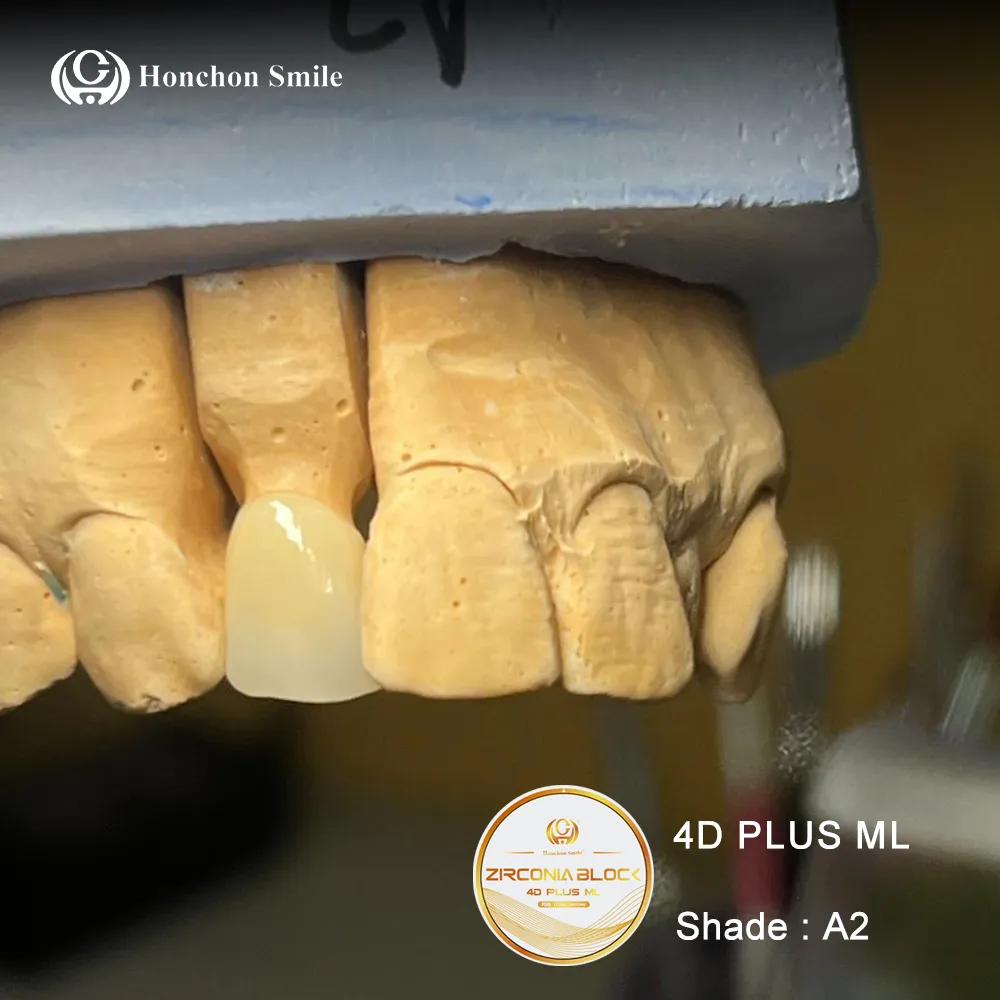In daily dental practice, zirconia has become one of the most trusted restorative materials. Its combination of strength, esthetics, and biocompatibility has made it the first choice for many crowns and bridges. Still, technicians and clinicians often ask the same question:
“Do zirconia restorations have a high chipping rate?”

The answer depends on the type of zirconia used:
Monolithic zirconia: A single, solid block of zirconia is milled into the final shape. Because there is no porcelain veneer, the risk of chipping is extremely low. Clinical studies report survival rates above 95% at 5 years, with chipping rarely observed.
Layered zirconia: Here, a porcelain veneer is applied on top of a zirconia core to enhance esthetics. While beautiful, the veneering porcelain is more brittle than the zirconia base and is the primary source of chipping. This risk increases in multi-unit bridges or high-load posterior restorations.
Several elements can raise or lower the risk of chipping:
Porcelain thickness: The thicker the veneering porcelain, the higher the risk.
Occlusal forces: Heavy biting forces, especially in posterior regions, put restorations at risk.
Manufacturing process: Improper sintering (such as fast cooling) or non-uniform porcelain application can create internal stresses.
Clinical adjustment: Aggressive grinding, poor polishing, or inadequate re-glazing can weaken the porcelain layer.
Both labs and clinicians can minimize chipping by following best practices:
Prefer monolithic zirconia in high-stress areas like molars and implant-supported restorations.
Design carefully – ensure uniform porcelain thickness and avoid unsupported cusps.
Follow proper sintering protocols – especially cooling cycles – to reduce residual stress.
Use fine polishing tools and avoid overheating during adjustments.
Educate patients on avoiding extreme biting habits, like chewing hard objects.
So, do zirconia restorations have a high chipping rate?
Monolithic zirconia: No. The chipping rate is very low, making it one of the most reliable options in restorative dentistry.
Layered zirconia: Yes, the veneer can chip if not properly designed, manufactured, or handled.
For dental professionals, the practical solution is simple: choose monolithic zirconia for durability in functionally demanding cases, and reserve layered zirconia for esthetic zones where appearance is the top priority.